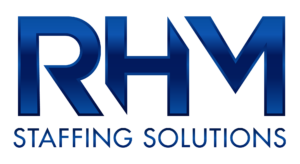Top 4 Trends Impacting the Recruiting Landscape Today

We’ve come a long way since Rolodexes and newspaper ads were the kings of the recruiting world. These days, a host of players have formed a new dynasty in recruiting by combining technological advancements, introducing new levels of collaboration, and adapting to societal trends.
Here’s a peek at a few of the most impactful trends in recruiting and why they matter:
1. Recruitment Marketing
By now, there’s a good chance that parrots across the U.S. are squawking out phrases like “candidate-driven market” and “more jobs than job seekers” while their owners read “candidate-driven market” in the first sentence of their first e-mail of the day.
Well, it’s true. Candidates are scarcer than they’ve ever been, and any edge you can gain on the competition in attracting them can serve as a tremendous boon.
Recruitment marketing is the process of attracting and nurturing talented individuals to your organization by marketing to them, just like a company marketing its goods to consumers.
As this candidate-driven market persists in the coming years, boosting your recruitment marketing efforts could very well be one of the most important pieces in driving your business efforts.
2. Collaborative Hiring
Given the candidate-driven market in which we operate, forces must be joined and resources combined that previously may have existed apart. Any edge matters when there’s a shortage of job seekers and the good ones don’t last long or sitting around waiting for you to reach out to them.
Like what we see in recruitment marketing, collaborative hiring is another example of the necessity of a more involved approach in today’s market. As much as can be accomplished by one hard-nosed, driven recruiter, you can just do more with two. Or three. Or a whole team. Not only one network, but a network of networks. Recruiters, hiring managers, HR managers, and executives working together to produce a better experience for the candidate.
And for as long as the candidate remains behind the wheel in this market, that’s what matters.
3. Embracing the Flexible Workforce
The modern workplace continues to become less homogenously composed of similar cultures, ages, and ethnicity. This also extends to the specific category of actual employees.
Full-timers, contractors, freelancers, interns, and whatever other categories exist, fuse to make up increasingly more of the modern workplaces.
The numbers of independent workers and those with roles in the gig economy have been steadily growing to rival those belonging to the traditional job force. Understanding and welcoming this ecosystem is essential as many part-time or freelance hires can transition into valuable full-time employees should the fit be suitable.
4. Hiring Generation Z
Another category of workers is jostling their way into our workplaces: those born between the mid-1990s and 2000s. With the U.S. Census Bureau predicting around 61 million of the newest generation entering the workforce in the next two years, it would be wise to consider what sort of adaptations to recruitment are most needed to suit this group.
Having a response or a plan in place to the fact that positive relationships at work ranked as a top concern for Gen Z’ers is going to make a difference.
Knowing the answer to what it means that Gen Z’ers feel that meeting one-to-one with their organizational leaders is very important. How does this affect your hiring process? Should management be more involved in the progression of their careers?
Considering the sentiments and characteristics of this new wave of candidates will be fundamentally necessary as they begin to browse the job boards for the first time.
RHM Staffing Solutions
Looking for an innovative, polished, and proven response to the increasingly complex issues in the staffing world? The industry veterans at RHM are ready to resolve whatever needs you have. Reach out today, and make an important step in your next hiring decision.
